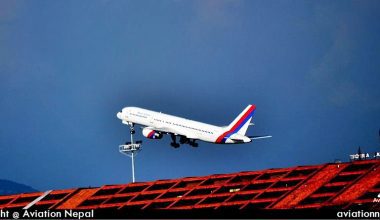In an incredibly fickle world of air business, aircraft manufacturers are constantly working on new design technologies. New plane makers are emerging in the US in a race to produce the aircraft that can up the travel game. American startup Otto Aviation Group seeks to disrupt the aviation landscape with an unconventional design that combines innovation, efficiency, and sustainability. The Yorba Linda-based company is developing Celera 500L, a potentially revolutionary business aircraft with an unusual bullet shape. Should the aircraft meet its design purpose, it would be one of the greatest achievements in the aviation and travel industries in 50 years.

The new Celera 500L is the brainchild of a research scientist and systems engineer William Otto. The aerospace veteran Otto conceived Celera as an unconventional approach to air travel problem-solving. Frustrated by the status quo of inconvenient commercial air travel and costly private flights, Otto developed Celera 500L.
Progress status of game changer Celera 500L
The innovative Celera 500L is a prototype striving to advance into a production airplane. The aerodynamic prototype flew for the first time in January 2018 and has successfully operated more than 50 test flights.
In 2022, Otto Aviation partnered with British/American hydrogen-electric developer ZeroAvia to make a zero-emission powertrain. The American venture agreed with ZeroAvia to build a hydrogen-powered version of the upcoming Celera 500L. The collaboration means the new jet may feature a hydrogen-electric propulsion system that delivers zero-emission flights.
Also Read: How to identify the difference between Airbus and Boeing
Developing a fuel cell-electric powertrain specific to Celera’s requirements is critical in achieving lower costs and climate impacts. ZeroAvia’s hydrogen fuel cell powertrain concept blends well with Celera 500L’s bulbous airframe shape. Compared to conventionally-designed airframes, the new Celera airframe design facilitates the storage of large volumes of hydrogen and guarantees brain-bustling efficiency figures. The hydrogen-fueled Celera will present a zero-emission range of 1,000NM (1852km) which helps to offset emission challenges.

The iconic Celera 500L is targeted to be introduced by 2023-2025. The CEO of Otto Aviation, William Otto, aims to achieve FAA certification for this high-efficiency aircraft by 2023. The next step is to set up a manufacturing facility rolling out the actual Celera 500Ls to customers in the next two years.
Once the aircraft enters volume production, it will certainly transform the course of aviation and transportation forever. The extraordinary aircraft promises new standards in speed, range, and fuel economy and a huge revolution in certain aviation sectors.
While getting an exotic concept into a flying form is a herculean task, the company believes in bringing the Celera 500L to market. According to Otto, the results from the prototype test flights have been promising and validate the aircraft’s operating performance goals. The test flights have demonstrated the prototype achieved speeds over 250mph (400km/hr) and elevations up to 15,000 feet.
Celera 500L applications
Celera 500L will essentially be a business aircraft allowing direct flights between US city pairs at speeds and fares comparable to commercial flights. It will be a commercially viable airliner that many individuals and families can charter without breaking their banks. Private air transportation is the domain of wealthy/elite people. The extraordinary Celera 500L will leave an indelible mark on air travel by disrupting the private air market at the lower end.
Although mainly aimed at civilian and commercial operators, Otto has also hinted at the possibility of unmanned variants and military versions. Beyond the passenger transport applications, the aircraft manufacturer may potentially branch out Celera 500L into military operations. The impressive fuel range and high fuel economy characteristics of the Celera 500 enable operators to conduct military missions. Besides, the carrier can prove fit for intelligence, surveillance, and reconnaissance (ISR) missions by equipping any sensor suites. The scope of Celera 500L is wide and will possibly include military and surveillance utility in upcoming years.
Specification and performance of Celera 500I
Celera 500L is a mid-wing monoplane designed to be 4-5 times more efficient than turboprop aircraft and 7-8 times cheaper than jets. The plane will accommodate six passengers and fly for up to 4,500nmi. It is slated to be the most fuel-efficient aircraft offering a fuel economy of 18 to 25 miles per gallon. A typical similar-sized jet burns one gallon of fuel every two to three miles. Otto Aviation, the startup behind Celera 500L, claims that the Celera 500 operators will incur an operating cost of just $328 per hour. This unbelievably low per-hour flight cost is approximately six times lower than other business planes ($2100).
Also Read: Airbus’ A340 “BLADE” demonstrator makes first flight
Regarding speed, the rear-engined Celera 500L can cruise at more than 460 miles per hour. Furthermore, it will have a maximum glide ratio of 22:1. In engine failure, Celera 500L pilots can glide for up to 120 miles entirely unpowered, resulting in higher flight safety. But how will the plane accomplish all of its head-turning claims on fuel economy, operating cost, and speed? All these remarkably ambitious and disruptive sets of capabilities will be made possible with its laminar flow shape, high-aspect-ratio wing, and turbodiesel engine.
Laminar flow shape of Celera 500L
Celera 500L has an unconventional shape–like that of an egg, a bullet, or a teardrop. It has a ‘flying suppository shape,’ with a bulbous fuselage, a pusher propeller hanging off the tail, and a short, thin wing.
This elongated egg-like shape is used to leverage the benefits of laminar flow. Laminar flow is a smooth, continuous flow of air in parallel layers, with no disruption, over the contour of wings or airfoil. As the wing moves through the air, it creates drag force which acts in the direction of air freestream flow. The nature of airflow largely determines the amount of drag force-smoother the layer of airflow; the lower the drag force, and vice versa. The airflow is laminar when smooth and uniform across the surface without a mixture of adjacent layers moving at different velocities. The odd shape of the Celera 500L emphasizes laminar-flow aerodynamics, allowing for smoother air penetration.

The highly aerodynamic laminar flow shape of the Celera 500L plane increases efficiency in flight by minimizing drag. The laminar flow on the plane surface yields low drag, which makes it less power-hungry. Otto claims that 500L’s laminar flow design in the fuselage, wings, and other surfaces offers a 59% reduction in drag. When drag, which is responsible for slow speed and fuel waste, is minimal, the aircraft will fly faster and burn less fuel.
Laminar flow isn’t a new concept, as earlier manufacturers have already incorporated this technology in numerous production aircraft. But, most passenger airplane designs have focused on wings and tails to maintain laminar airflow. The Celera 500L design will optimize the wing, tail, and fuselage to maximize laminar flow and counter turbulent airflow. This new airplane can create history by becoming the first FAA-certified airline to present a truly holistic approach to laminar flow surfaces.
The real question is, why don’t existing aircraft maintain laminar airflow across the fuselage? It’s because laminar flow structures require the surfaces to be shaped to extremely fine tolerances without any flex, bend, or distortion. Even small temporary impediments like ice on the wings or dead bugs can lead to a laminar flow transition into turbulent flow. It’s not possible to achieve the surface precision required with metals. Metals are susceptible to surface degradation and aren’t ideal construction materials for laminar flow structures.
Celera 500 will optimize laminar flow across its wings, fuselage, and empennage. Instead of putting the propulsion device in front in a conventional tractor configuration, it will feature a single five-blade propeller at the back. Keeping the propeller as far back as it can be in a pusher configuration results in the absence of aerodynamic interference from it.
The aircraft’s teardrop shape allows a broad cross-section which makes for a roomy main cabin. The spacious cabin enhances inflight comfort for six passengers. They can travel in a personal haven of comfort in a luxury provided by first class on a jetliner.
Diesel piston engine
Besides the laminar flow design, the powerplant also plays a major role in Celera’s notable performance characteristics. The highly-efficient Raikhlin Aircraft Engine Developments (RED) A03 V12 piston engine will match the most efficient aerodynamic body. The Celera 500L will run on an efficient 550-horsepower combustion engine and offer massive savings on fuel and emissions. The rear-mounted engine has a multi-stage turbocharger and can run on an electric or hydrogen fuel cell to make the plane emission-free.

The turbodiesel engine supplied by RED has two six-cylinder banks which can operate independently of each other. If one bank experiences a power issue, the other will continue to supply power to the aircraft.
Hence, the laminar aerodynamic airframe and RED A03 V12 piston engine form a key part of Celera’s efficiency, speed, and sustainability equation.






